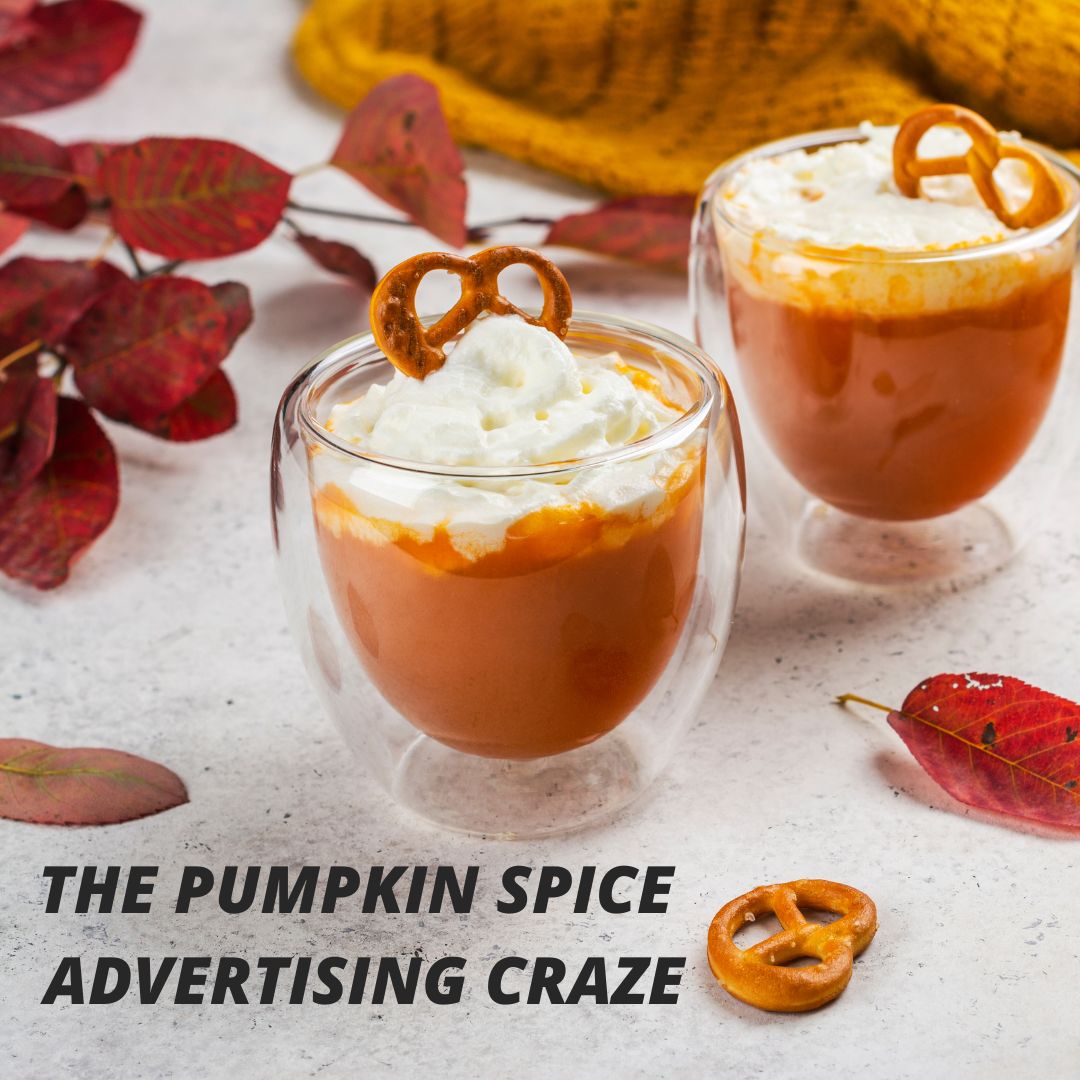
27 Aug The Pumpkin Spice Advertising Craze: How a Seasonal Flavor Became a Cultural Phenomenon
Each year, as the leaves begin to turn and the air takes on a crisp edge, a familiar scent and taste begin to permeate the atmosphere: pumpkin spice. What began as a seasonal flavor for coffee has evolved into a full-fledged cultural phenomenon, driving an advertising frenzy that now signals the start of autumn as much as the changing foliage itself. The pumpkin spice craze is not just about flavor; it’s about nostalgia, branding, and the commodification of seasonal joy.
The Birth of Pumpkin Spice
Pumpkin spice as we know it today is a blend of cinnamon, nutmeg, ginger, allspice, and cloves—spices traditionally used in pumpkin pie. The flavor has been around for decades in various forms, but it wasn’t until Starbucks introduced the Pumpkin Spice Latte (PSL) in 2003 that the modern obsession truly took off.
What started as a limited time offering quickly became a best-seller, with Starbucks selling over 200 million PSLs within the first decade. The success of the PSL set the stage for a marketing revolution, transforming pumpkin spice into a seasonal must-have.
The Psychology Behind the Craze
The allure of pumpkin spice is not just about taste; it’s deeply tied to emotion. The flavor is a powerful trigger for nostalgia, evoking memories of Thanksgiving dinners, cozy sweaters, and family gatherings. This emotional connection is a goldmine for marketers, who leverage it to tap into consumers’ desire for comfort and tradition. In an increasingly fast-paced world, the seasonal return of pumpkin spice offers a reassuring sense of continuity and a fleeting escape into a simpler, cozier past.
Plus, the exclusivity of the flavor—available only during the fall—adds to its appeal. The limited-time availability creates a sense of urgency, encouraging consumers to indulge before the season ends. This scarcity-driven demand is a classic marketing tactic, and in the case of pumpkin spice, it’s been wildly successful.
The Expansion of Pumpkin Spice Products
Following Starbucks’ success, other brands quickly jumped on the pumpkin spice bandwagon, resulting in an explosion of pumpkin spice-flavored products. What began with coffee and baked goods has now expanded to include everything from cereal and yogurt to dog treats and even deodorant. The sheer variety of pumpkin spice products is staggering, and it’s a testament to the flavor’s pervasive influence on consumer culture.
This expansion, however, has not been without its critics. Some argue that the commercialization of pumpkin spice has gone too far, turning a beloved seasonal flavor into a marketing gimmick. The ubiquity of pumpkin spice has led to a backlash from those who feel that its overuse has diluted its original charm. Despite this, sales of pumpkin spice products continue to soar, driven by a mix of genuine enthusiasm and ironic consumption.
The Role of Social Media
Social media has played a pivotal role in the rise and sustained popularity of pumpkin spice. Platforms like Instagram, X, and TikTok videos have become key arenas for brands to showcase their latest pumpkin spice offerings. The visually appealing nature of pumpkin spice products—think frothy lattes, vibrant orange hues, and cozy fall-themed packaging—makes them perfect for sharing. Hashtags like #PumpkinSpice and #PSL have become seasonal trends, with users posting photos of their pumpkin spice purchases, recipes, and even memes.
The social media buzz creates a feedback loop, amplifying the craze and driving even more demand. Influencers and celebrities further fuel the hype by endorsing pumpkin spice products, making them even more desirable to their followers. The combination of social media visibility and influencer marketing has turned pumpkin spice into more than just a flavor; it’s a cultural symbol of the fall season.
Pumpkin Spice as a Branding Tool
For brands, pumpkin spice is not just a flavor; it’s a powerful branding tool. By associating their products with the warmth and comfort of autumn, companies can tap into the emotional resonance of the season. This is particularly valuable for brands that don’t typically see a seasonal spike in sales. For example, a company that sells yogurt or cereal might not have a strong association with fall, but by introducing a pumpkin spice variant, they can capitalize on the seasonal hype and attract attention from consumers.
Also, the introduction of pumpkin spice products allows brands to experiment with limited-time offerings, which can create buzz and draw in customers who are eager to try something new. The seasonal nature of these products also means that they don’t have to commit to a long-term change in their product line, making it a low-risk, high-reward strategy.
The Future of Pumpkin Spice
As pumpkin spice continues to dominate autumnal advertising, the question arises: how long can this craze last? While some fads fade, the deep-rooted emotional and cultural connections that consumers have with pumpkin spice suggest that it’s here to stay. However, the market will likely see more innovation and diversification in pumpkin spice offerings as brands seek to keep the flavor fresh and exciting.
The pumpkin spice advertising wave is a perfect example of how a simple flavor can be transformed into a cultural phenomenon. Through a combination of nostalgia, scarcity, social media, and clever branding, pumpkin spice has become synonymous with fall, driving a multi-billion-dollar industry that shows no signs of slowing down. Whether you love it or hate it, there’s no denying the impact of pumpkin spice on the landscape of modern advertising.


